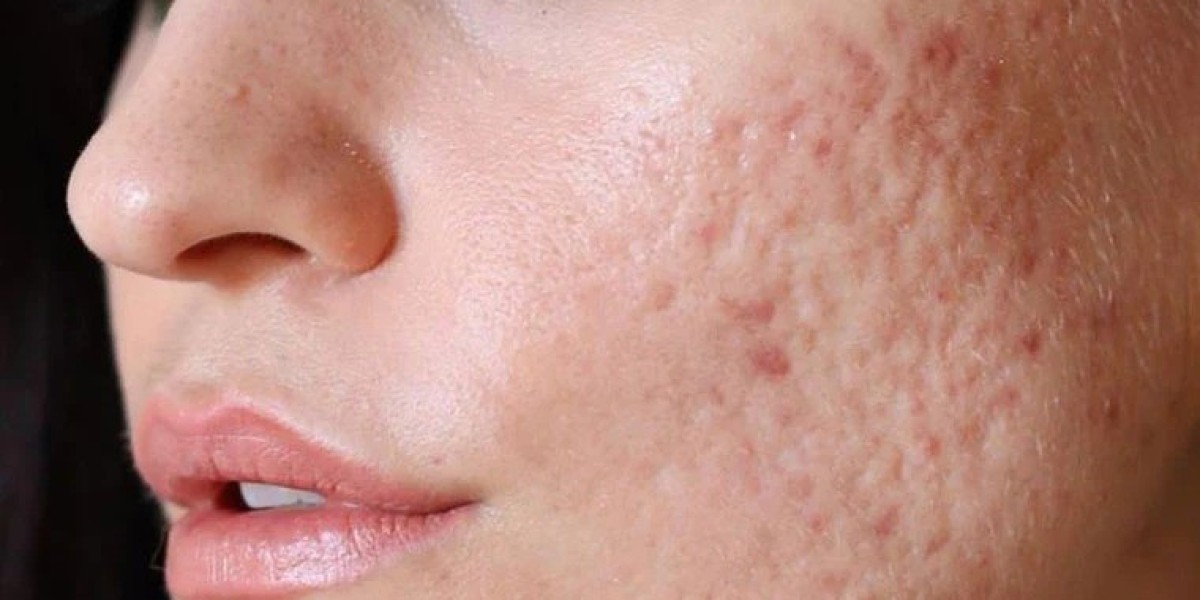Acne is a common skin condition that affects millions of people worldwide. While acne breakouts can be frustrating, what's often more distressing are the scars they leave behind. Understanding the different types of acne scars and how to treat them is crucial for achieving clear, smooth skin.
Types of Acne Scars
1. Ice Pick Scars
Ice pick scars are small, deep pits in the skin that resemble puncture marks. They are often caused by severe acne and are challenging to treat with over-the-counter products. Treatment options for ice pick scars include chemical peels, microneedling, and laser resurfacing.
2. Boxcar Scars
Boxcar scars are wider and more shallow than ice pick scars, with defined edges. They are usually caused by inflammatory acne. Treatment options for boxcar scars include dermal fillers and fractional laser therapy.
3. Rolling Scars
Rolling scars create a wave-like appearance on the skin and are caused by damage under the surface. Treatment options for rolling scars include subcision and microneedling with radiofrequency.
4. Hypertrophic and Keloid Scars
Hypertrophic and keloid scars are raised, thick scars that can be itchy or painful. They are caused by an overproduction of collagen during the healing process. Treatment options for hypertrophic and keloid scars include corticosteroid injections, laser therapy, and surgical removal.
Prevention and Home Remedies
While some acne scars can be challenging to treat, there are steps you can take to prevent them from forming in the first place. Avoid picking or squeezing acne lesions, as this can increase the risk of scarring. Keep your skin clean and moisturized, and use sunscreen daily to protect your skin from sun damage.
There are also several home remedies that may help fade mild acne scars. Aloe vera, vitamin E, and lemon juice are all-natural ingredients that can help improve the appearance of scars over time.
Professional Treatments
If you have severe acne scars, it
Acne is a common skin condition that affects millions of people worldwide. While acne breakouts can be frustrating, what's often more distressing are the scars they leave behind. Understanding the different types of acne scars and how to treat them is crucial for achieving clear, smooth skin.
Types of Acne Scars
1. Ice Pick Scars
Ice pick scars are small, deep pits in the skin that resemble puncture marks. They are often caused by severe acne and are challenging to treat with over-the-counter products. Treatment options for ice pick scars include chemical peels, microneedling, and laser resurfacing.
2. Boxcar Scars
Boxcar scars are wider and more shallow than ice pick scars, with defined edges. They are usually caused by inflammatory acne. Treatment options for boxcar scars include dermal fillers and fractional laser therapy.
3. Rolling Scars
Rolling scars create a wave-like appearance on the skin and are caused by damage under the surface. Treatment options for rolling scars include subcision and microneedling with radiofrequency.
4. Hypertrophic and Keloid Scars
Hypertrophic and keloid scars are raised, thick scars that can be itchy or painful. They are caused by an overproduction of collagen during the healing process. Treatment options for hypertrophic and keloid scars include corticosteroid injections, laser therapy, and surgical removal.
Prevention and Home Remedies
While some acne scars can be challenging to treat, there are steps you can take to prevent them from forming in the first place. Avoid picking or squeezing acne lesions, as this can increase the risk of scarring. Keep your skin clean and moisturized, and use sunscreen daily to protect your skin from sun damage.
There are also several home remedies that may help fade mild acne scars. Aloe vera, vitamin E, and lemon juice are all-natural ingredients that can help improve the appearance of scars over time.
Professional Treatments
If you have severe acne scars, it's essential to consult with a dermatologist or skincare professional. They can recommend the best treatment options for your specific type of scars. Professional treatments for acne scars can be costly, but they are often more effective than over-the-counter products.
Some professional treatments for acne scars include laser therapy, chemical peels, dermabrasion, and microdermabrasion. Your dermatologist will be able to recommend the best treatment option for your skin type and the severity of your scars.
Conclusion
Acne scars can have a significant impact on self-esteem and quality of life. By understanding the different types of acne scars and how to treat them, you can take control of your skin's health and achieve the clear, smooth complexion you desire. Remember, patience is key when treating acne scars, as it can take time to see results. With the right treatment plan and skincare routine, you can effectively reduce the appearance of acne scars and restore your skin's natural beauty.
's essential to consult with a dermatologist or skincare professional. They can recommend the best treatment options for your specific type of scars. Professional treatments for acne scars can be costly, but they are often more effective than over-the-counter products.
Some professional treatments for acne scars include laser therapy, chemical peels, dermabrasion, and microdermabrasion. Your dermatologist will be able to recommend the best treatment option for your skin type and the severity of your scars.
Conclusion
Acne scars can have a significant impact on self-esteem and quality of life. By understanding the different types of acne scars and how to treat them, you can take control of your skin's health and achieve the clear, smooth complexion you desire. Remember, patience is key when treating acne scars, as it can take time to see results. With the right treatment plan and skincare routine, you can effectively reduce the appearance of acne scars and restore your skin's natural beauty.



